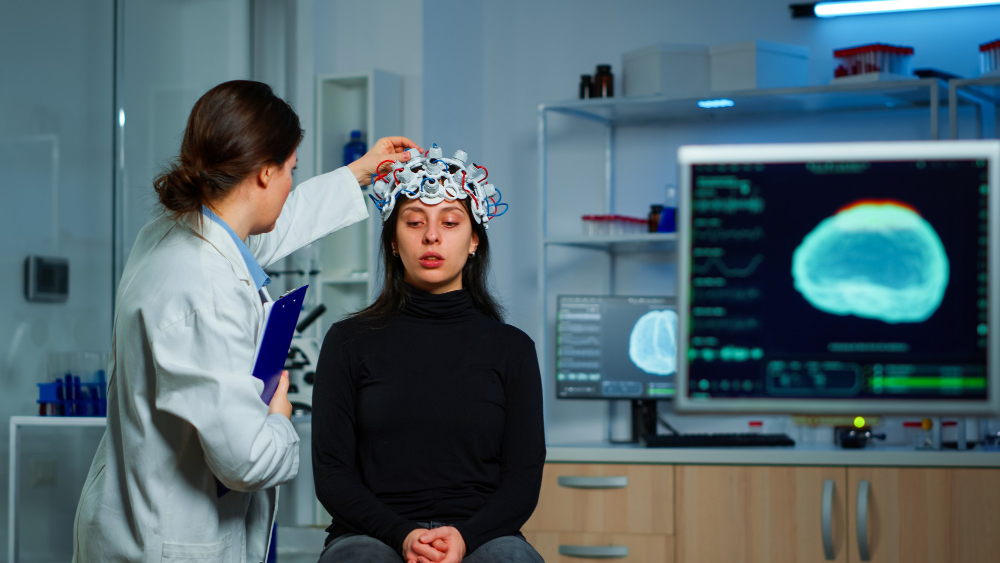2. Why CT Temporal Bone is Important
The temporal bone is one of the most complex structures in the skull, and precise imaging is necessary to identify subtle pathologies affecting auditory and vestibular function. CT Temporal Bone is important for:
-
Detecting chronic ear infections such as cholesteatoma or mastoiditis
-
Evaluating conductive or sensorineural hearing loss causes
-
Identifying congenital ear abnormalities and ossicular chain malformations
-
Assessing facial nerve canal and skull base lesions
-
Planning ear surgery or cochlear implant procedures
-
Evaluating trauma to the temporal bone or skull base
Accurate CT visualization helps ENT specialists, audiologists, and neurosurgeons diagnose and plan effective treatment strategies for ear and cranial disorders.
Secondary keywords: CT scan for ear pain, CT mastoid, CT inner ear, temporal bone trauma scan, skull base imaging, ENT CT scan, CT for facial nerve lesion.
3. Benefits of CT Temporal Bone
CT Temporal Bone imaging offers diagnostic clarity unmatched by standard imaging methods. The main benefits include:
-
High-Resolution Imaging: Detects even minor bone and structural abnormalities
-
Quick Procedure: The scan usually takes less than 10 minutes
-
Non-invasive: Requires no surgical intervention or incisions
-
Detailed Visualization: Helps identify both bone and soft tissue changes
-
Supports Early Diagnosis: Facilitates prompt treatment to prevent hearing complications
-
Low Radiation Dose: Modern scanners minimize exposure for patient safety
Patients benefit from accurate detection of ear, nerve, and skull base conditions, reducing the need for exploratory surgery or delayed diagnosis.
Low-competition keywords: temporal bone HRCT, CT scan for ear structures, diagnostic CT for cochlear implant planning, imaging for ear trauma, low-dose temporal bone CT.
4. How the CT Temporal Bone Test is Done
At Diagnopein, the CT Temporal Bone procedure is simple, safe, and patient-friendly.
Here’s how it is typically performed:
-
Preparation: No special preparation is needed unless a contrast study is recommended. Patients are advised to remove metal objects such as earrings or hearing aids.
-
Positioning: The patient lies on the scanning table with the head positioned carefully to focus on the temporal region.
-
Scanning: The CT scanner rotates around the head, capturing detailed axial and coronal images through high-speed X-rays.
-
Post-Scan: The images are reviewed by a radiologist who prepares a detailed report for your referring doctor.
If contrast is used, it enhances the visualization of blood vessels and soft tissues. It is injected intravenously and is well-tolerated by most patients.
Technical parameters (for reference):
-
Slice thickness: 0.5–1 mm high-resolution
-
Plane: Axial, coronal, sagittal reconstruction
-
Field of view: Focused on petrous and mastoid portions of the temporal bone
-
Scan time: 5–10 minutes depending on protocol
5. Book Your CT Temporal Bone Scan at Diagnopein
At Diagnopein, we combine medical expertise with advanced imaging systems to deliver accurate CT Temporal Bone results you can trust. Our radiologists specialize in neuro and ENT imaging, ensuring each report is detailed and clinically actionable. Whether you need a scan for chronic ear pain, post-traumatic assessment, or surgical planning, we provide a smooth, timely, and affordable diagnostic experience.
Call now or book online for your CT Temporal Bone scan at your nearest Diagnopein center.








